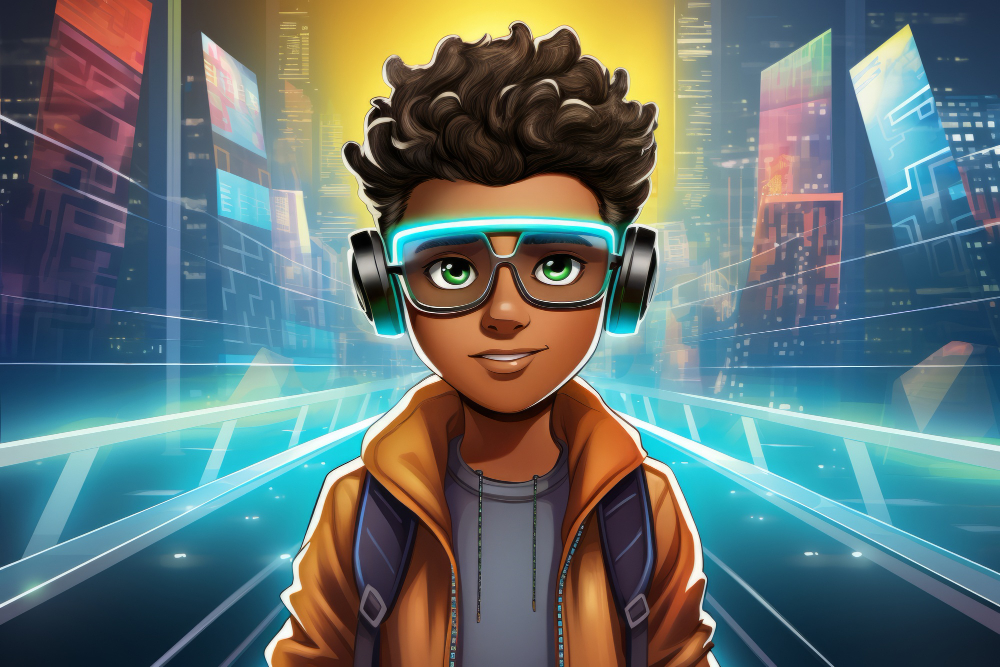AI 3D Models Generator are cutting-edge tools driven by AI algorithms. This innovative software solution harnesses the power of artificial intelligence to swiftly generate detailed 3D models from either textual descriptions or real-world objects. These generators play a crucial role in the realm of 3D modeling by streamlining what was once a time-consuming process. By automating the creation of 3D models, they empower users, particularly game developers and product designers, to iterate and innovate rapidly.
As we delve deeper into understanding AI 3D model generators, we’ll explore their functionalities, the underlying AI algorithms that power them, and the tangible benefits they offer to users in terms of time efficiency and creative potential.
What are AI 3D Model Generators?
Definition: AI 3D model generators are sophisticated software tools designed to utilize AI algorithms for the automatic creation of 3D models. These tools can interpret input from text prompts or directly from real-world objects to create them, transforming descriptions into tangible digital models.
Functionality: These tools excel in their ability to generate highly detailed 3D models swiftly. By leveraging AI capabilities, they automate intricate design processes that traditionally required significant time and specialized expertise. To generate accurate 3D models, users need to provide a detailed description of the desired design and style. This functionality not only accelerates the development cycle but the tool also enhances productivity for professionals across industries.
Examples: Popular examples of AI 3D model generators include tools that allow users to input simple images and text descriptions and receive complex 3D models as output. Some platforms specialize in creating models based on photographs or scans of real-world objects, showcasing the versatility and adaptability of AI-driven design solutions.
Create 3D Models in Just Minutes with AI
Artificial Intelligence (AI) has revolutionized numerous industries, but perhaps none more so than 3D modeling. This transformative technology has not only simplified but also accelerated the creation of intricate 3D models in just minutes across various fields.
How Do AI 3D Models Generator Work?
AI Algorithms:
AI 3D model generators rely on advanced algorithms that analyze and interpret input data, whether it’s textual descriptions or visual inputs. These algorithms are trained to understand and describe the nuances of design elements and translate them into coherent 3D structures.
Text-to-3D Model:
The process involves converting textual descriptions of objects or scenes into detailed 3D models. Users input the description and parameters such as dimensions, materials, and specific features, and the AI algorithm processes this information to generate accurate visual representations.
Real-World Object:
Some AI generators can generate 3D models directly from photographs or scans of physical objects. This capability extends the utility of these tools beyond conceptual design to include precise replication and adaptation of existing real-world artifacts into digital image formats.
Benefits of Using AI 3D Model Generators
Time-Saving: AI 3D model generators significantly reduce the time and effort required for 3D model creation compared to traditional methods. This full scale and efficiency allow professionals to focus more on creative aspects and iterative improvements rather than labor-intensive modeling tasks.
User-Friendly Interface: These tools typically feature intuitive interfaces that simplify the 3D modeling process, making it accessible even to those without extensive technical expertise. This accessibility democratizes design capabilities, enabling broader participation in creative projects.
Creativity Unleashed: By automating the technical aspects of 3D modeling, AI generators free up users to explore and experiment with creative ideas more freely. They serve as catalysts for innovation, enabling rapid prototyping and iterative design refinements that drive creative projects forward.
Quality and Scalability: The models generated by AI 3D model generators exhibit high quality and scalability, making them suitable for diverse applications ranging from rapid prototyping in product design to detailed animations in entertainment and educational contexts.

Applications in Different Industries
Game Development
AI 3D model generators play a pivotal role in game development by revolutionizing asset creation processes. These tools enable game developers to swiftly generate complex 3D models of characters, environments, and props. By automating the modeling phase, AI accelerates production timelines, allowing developers to focus more on gameplay mechanics and overall design.
Moreover, AI-driven models enhance game visuals with detailed textures and realistic animations, elevating the immersive experience for players. This efficiency not only reduces development costs but also facilitates quicker iterations and updates during game development cycles. AI tools powered by text prompts can save significant time and effort in creating these detailed assets, performing like magic to transform conceptual ideas into tangible digital designs.
Product Design
In product design, 3D Model Generation facilitate rapid visualization of concepts and prototypes. Designers can input specifications and ideas into these tools, which then generate detailed 3D models ready for evaluation and refinement. This capability streamlines the design iteration process, enabling designers to quickly iterate on multiple concepts and variations.
By visualizing products in a digital space early in the design process, teams can identify potential issues and improvements efficiently. This enhances collaboration among teams and stakeholders, leading to more informed decision-making and faster time-to-market for new products.
Animation and Film
AI-driven 3D model generators are transforming the animation and film industries. Specifically, they are enhancing the creation of lifelike characters and detailed environments.
AI models also offer scalability, enabling studios to create vast, immersive worlds and populate them with diverse characters and objects. By automating repetitive tasks, AI empowers creatives to focus on storytelling and artistic direction. Consequently, this pushes the boundaries of visual storytelling in animation and film.
Future Trends and Innovations
Looking ahead, advancements in AI promise to elevate AI 3D Models Generator to new heights. Future innovations might include enhanced generative AI algorithms that swiftly produce even more detailed and realistic 3D models. Integration with complementary software tools could streamline workflows, offering seamless transitions from design to implementation.
Users and industries expect AI 3D Models Generator to evolve, delivering efficiency, heightened creativity, and customization options. As scalability becomes a more powerful tool, these tools are poised to become indispensable in various sectors. Consequently, they will be valuable in fields ranging from gaming and animation to architecture and beyond. The future holds immense potential for AI-driven advancements in 3D modeling.

Conclusion
In conclusion, AI 3D Models Generator represent a groundbreaking leap forward in design technology. They streamline the creation of intricate 3D models, saving time and enhancing productivity. Consequently, professionals across industries like gaming, product design, and animation benefit greatly from these tools.
Looking ahead, AI 3D Models Generator and it’s continual advancement promises even greater capabilities, potentially revolutionizing how we approach design and creativity. Embracing these tools not only boosts efficiency but also unlocks new realms of innovation and customization. Whether you’re a seasoned designer or new to 3D modeling, exploring AI 3D model generators like 3DAiLY can empower you to bring your creative visions to life with unprecedented ease and precision.



